Railway reopenings seem to have been in the ascendency of late, as continuous year-on-year growth in passenger numbers increases the pressure on an already congested rail network.
The need for extra capacity has therefore long been a priority for both Network Rail and train operators, as they search for diversionary routes, increased network resilience, and ways to reach new markets as our towns and cities continue to expand.
The end result is sometimes a strong economic case for a new railway, such as London’s Crossrail. But more often it merely requires a reversal in the fortunes of routes deemed uneconomical in the 1960s, and subsequently lost to the notorious Beeching cuts set in motion more than five decades ago.
The statistics speak for themselves. In 2015 the Borders line became one of the dozen-or-so new passenger lines to open since 2000, while the Campaign for Better Transport lists more than 200 currently active proposals for introducing passenger services on either closed lines or those that have become freight only.
But despite the growing need for reopened connections, the lack of regional (and often overstated local) benefits render many of these proposals unfeasible. The situation is made worse by the mounting cost of replacing or putting back infrastructure lost in the intervening decades, as well as the need to find complex engineering solutions to circumvent new developments that now encroach on original alignments.
The inherent difficulty in accurately predicting future demand or achieving certainty in cost has also created a climate of caution within Network Rail, and within the local authorities whose promotion of such schemes is vital if they are to secure funding, as you are about to read.
Despite these barriers, most campaigners will almost always tell you that their cause is a ‘no-brainer’. The schemes that will actually constitute ‘no-brainers’ are supposed to be established by Network Rail’s eight-stage GRIP process (Governance for Railway Investment Projects, see panel page 88), whereby NR can perform a SWOT analysis by assessing feasibility, funding and engineering options prior to committing to executing a final project brief.
For a good grounding in what GRIP entails, RAIL 816 reported on how the long and well-organised campaign to reopen the 11-miles of closed railway between Skipton and Colne has been trying to fulfil NR’s GRIP criteria, as it moves closer to the delivery phase.
The latest campaign to be described as a ‘no-brainer’ is the case to reinstate the short eight-mile route between Stratford-upon-Avon and Honeybourne, which becomes glaringly obvious when considered in not just a local, but also a regional or even national context.
In addition to the connectivity it will bring to the world-famous tourist destination of Stratford and other parts of south Warwickshire, a quick glance at the surrounding rail network will demonstrate its obvious potential as an additional and much sought-after direct route between London, Oxford and the UK’s (traditionally regarded) second city of Birmingham.
The value of this was never more apparent than in February 2015, when a 350,000-tonne landslip near Harbury closed the Chiltern Main Line between Banbury and Leamington Spa for six weeks (RAIL 768). It cut off the entire West Midlands from direct access to the Thames Valley, and left the West Coast Main Line as the only route into the capital before full services were able to resume.
Arguably the Stratford-Honeybourne route should never have been closed in the first place. Having survived the Beeching axe of the 1960s, it finally shut in August 1976 in the most unfortunate of circumstances, following the derailment of a heavy coal train at Winchcombe.
The sheer scale of the track damage, combined with the wider economic climate (Chancellor Denis Healey had just applied to the IMF for an emergency loan conditional on deep cuts to public spending), persuaded a cash-strapped British Rail that the expense of repairs could not be justified amid decreasing traffic. Only the southernmost 2.3-mile section of the route was retained, to serve the former Army base at Long Marston (which closed in 1997).
Twenty years later and the complex is still rail connected. It is now used to store surplus rolling stock, although much of the land has been released to housing development. A small industrial estate also hosts a cluster of railway technology companies (including Vivarail), complete with a dedicated test track.
Since the end of through services in 1976, Stratford-upon-Avon has suffered greatly from its lack of southward access to the east-west Cotswold Line via Honeybourne Junction, for services to major employment centres in Oxford and London, and direct rail links to Cheltenham, Worcester and the South West.
With more than a million passenger journeys recorded in 2015/16, Stratford’s main station is instead now the southern terminus of the Shakespeare and North Warwickshire lines, and operated by London Midland.
Facing north, passengers for most destinations are forced to change at either Birmingham or Leamington Spa for onward connections, while Chiltern Railways provides just three direct services to London each day. This can often incur severe time delays, especially in Birmingham city centre where inter-city passengers from Stratford are required to transfer between Snow Hill or Moor Street and the city’s main station at New Street.
Residents will instead often drive to nearby Warwick Parkway for more frequent services on the Chiltern Main Line, or to the closest station on the Cotswold Line at Honeybourne.
However, this simply adds more car journeys to the local road network. And the car park at Honeybourne is hopelessly inadequate, having been built to cater for a village with just 1,600 residents, prior to the 320% increase in passenger numbers recorded there since 1997.
At the centre of the business case for reinstatement is the predicted growth of Stratford-upon-Avon, which is already home to some 30,000 residents who suffer the difficulties outlined previously. It also hosts two and a half million Shakespeare-loving visitors a year, worth almost £300 million to the town’s economy, yet only 6% of these arrive by rail compared with a national average of 13% for similar tourist hotspots.
The end result is chronic road congestion, especially on the town’s primary arterial route (Birmingham Road). Gridlock at peak times and during summer months has also made it impossible to run a punctual bus service, further deterring residents from using Stratford’s shops and businesses in favour of less congested destinations in Warwickshire and Worcestershire (including Leamington Spa, Solihull and Evesham).
The opening of Stratford Parkway on the town’s outskirts in May 2013 provided a partial solution to combating the vehicular nightmare of the town centre, but it shares the same operational constraints as Stratford by being on the same lines and receiving the same limited level of service.
Not only does this hinder economic growth by suppressing demand, the town’s car-induced problems are only set to get worse if the 17,520 new homes confirmed for the area in Stratford-upon-Avon District Council’s Core Strategy document are built as planned by 2031.
This includes more than 6,000 homes earmarked for two sites six miles south of Stratford, near Long Marston. Developer St Modwen Homes is currently building a large estate (known as Meon Vale) at the former army base, while Cala Homes has permission to build 3,500 homes at Long Marston Airfield.
On January 2 the Government also confirmed that Long Marston is to become one of 14 Garden Village developments that have been designated across the UK. This is predicted to add 10% more vehicles to the local road network as the village swells to a population of nearly 25,000, rivalling that of Stratford itself.
Local government has not remained entirely idle, however, and Stratford-upon-Avon District Council was proactive enough to commission a GRIP 3 study from Arup.
Published in 2012 and conducted according to DfT guidance, the report generated a modest base case benefit:cost ratio (BCR) of 0.8:1 - based on construction costs of between £53 million and £70m, and passenger growth of 4% per annum - but recognised that the BCR could rise to 2:1 with growth of 6% instead.
The BCR has since been revised to 3.34, based on the same costs but factoring in the major housing developments at Long Marston and a pledge from Cala Homes to contribute £17m to the cost of reinstating the line and building a new station at Long Marston.
It could be argued that the BCR is in fact even larger, given the unquantifiable economic benefits offered by reduced travel time for Stratford’s residents heading south, and the release of capacity on other routes when it is used either for diversions or indeed for freight.
The initially low BCR also reflected the scale of the engineering challenges faced at the Stratford end of the route, because the preferred construction option was identified as a single track running from the south end of Stratford-upon-Avon’s main station and into a dive-under. This is needed to enable the line to burrow beneath Seven Meadows Way, an inner relief road occupying the old railway formation, and a roundabout built where a level crossing once stood.
The railway could then reoccupy the original two-track alignment near Stratford Racecourse at the town’s southern outskirts, to run due south to Milcote Lane (approximately three miles distant).
This section of the route is largely intact and free from development, and now forms The Greenway walking and cycling track, which would be able to continue to share the alignment by running adjacent to a single-track railway.
From Milcote Lane to the existing railhead at Long Marston, the line could then become two-track once more with line speeds of up to 70mph all the way to the junction with the Cotswold Line at Honeybourne. The eastern track would use a reinstated eastern chord at Honeybourne for services to Oxford, while the western track would use the existing western chord for services to Worcester. However, permission would be needed to divert the Greenway onto a minor road between Milcote Lane and Long Marston village.
A second major engineering intervention would also be needed at Long Marston, where a light industrial estate has been constructed on the formation for approximately 300 metres. However, the Arup report identified that there is sufficient room to deviate the line slightly to the east, with provision made for a new station and grade separation with Station Road (to replace the former level crossing).
A head-on connection is then required with the existing freight-only line from Long Marston to Honeybourne Junction, which enters the Long Marston storage complex at its southern end. This 2.3-mile section of line would need redoubling and extensive track renewal, plus the reinstatement of Honeybourne eastern chord.
The optimal service was determined by Arup to be for two trains per hour running south from Stratford, one to Oxford for connections to Paddington, and the other to Worcester. There would also be capacity for the Long Marston rail complex’s freight traffic and the ocasional passenger charter.
Great Western Railway has already expressed interest in running at least one of these services, and included this desire in its North Cotswold Vision document released in February 2016.
The document outlines the operator’s ambition to increase frequency from one to two trains per hour along the largely singled Cotswold Main Line route from Oxford to Worcester. It seeks infrastructure enhancement to take place in Control Period 6 (April 2019-March 2024), costing up to £275m.
The Cotswold Main Line and Honeybourne reinstatement schemes are viewed by campaigners as very much inter-dependent, and it’s easy to see that both BCRs would be significantly increased should one or the other be given the go-ahead.
Services south of Stratford require the extra capacity on the Cotswold Main Line in order to run to Oxford or Worcester, while the £275m cost of providing the requisite infrastructure could be more justified if the business case were to include the economic benefits it will bring to Stratford-upon-Avon, as well as to communities already served by the line.
Reinstating the line might also strengthen calls to reopen the former route south of Honeybourne Junction to Cheltenham (closed in 1969). This route is partially occupied by the Gloucester & Warwickshire Steam Railway, which operates 12 miles of track between Cheltenham and Laverton, and which is hopeful of extending further north.
Since 2012, the reopening campaign has been steadily gaining in public, political and business support under the leadership of Fraser Pithie (Shakespeare Line Promotion Group), John Ellis (Cotswold Line Promotion Group) and John Morgan (Stratford Rail Transport Group).
However, it has reached an impasse. Despite it securing the backing of the district council, local MPs, and the neighbouring Worcestershire, Gloucestershire and Oxfordshire county councils, the all-important decision-makers at Warwickshire County Council have yet to be persuaded of its merits.
Under Network Rail guidelines, Warwickshire County Council (WCC) is required to promote the scheme through the GRIP process. The authority’s backing is also essential if funds are to be released from Coventry & Warwickshire Local Enterprise Partnership (CWLEP) to fund this costly exercise.
With GRIP 3 completed by the Arup report in 2012, the district council made an application in 2015 for £500,000 funding for a GRIP 4 study (single option selection). This was rejected by CWLEP, while papers released by WCC as recently as late January concerning the Stratford Area Transport Strategy fail to make any substantive reference to the reinstatement plan.
RAIL has also seen correspondence from WCC in which it refuses to engage with a GRIP 4 study, and it appeared indifferent to an offer made by Cala Homes to contribute £400,000 to support this critical step.
The lack of support from WCC seems inexplicable, especially given the strength of support the campaign enjoys elsewhere. This has been demonstrated yet again by a recent agreement made by a number of local councils to fund an Economic Impact Study (which is required to complement a GRIP 4 study).
More promisingly, a direct appeal made by the campaigners to NR Chief Executive Mark Carne has led to a pledge to arrange a discussion and to bring all parties to the table in early 2017. But one must wonder how long WCC can ignore the case to reopen the line, given the large-scale housing development taking place on its doorstep and Stratford’s historic dependence on visitors for its economic prosperity.
Whether its position changes or not, RAIL is happy to lend its voice to promote such a worthy reinstatement scheme that is indeed a ‘no-brainer’.


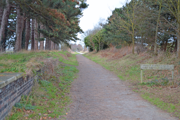
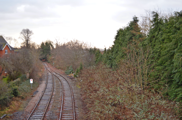
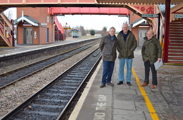
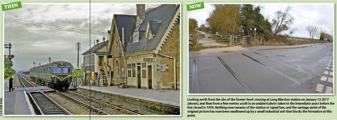
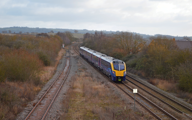
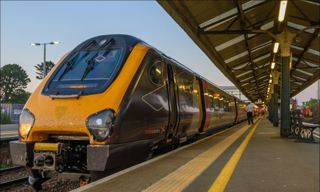
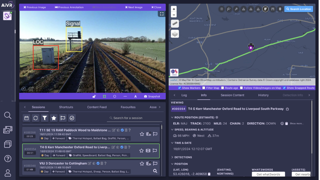
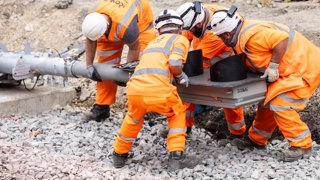
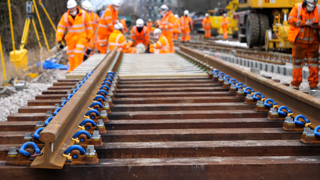











James Miller - 17/03/2017 13:45
I do wonder about some Councils. There is a good plan like this one and they can't seem to get interested. I haqve been taking to another group with the same problem. A few years ago, I could understand the train operators being relucytant, as they had to scratch around for roilling stock, but now they seem to be more enthusiastic, as perhaps having a 156 shuttling on a new branch bringing passengers to the main line is profitable, provided someone else pays for the infrastructure. It does seem to me that this line should be reopened.